What Does History Say About Weak Commodities And Bull Markets?
You have probably heard the following argument somewhere in recent weeks:
Weakness in commodities, especially copper, is telling us the global economy is weak and another horrible bear market in stocks is just around the corner.
The argument seems rational; commodity prices are falling because demand is weak, which is a reflection of economic weakness. That may be true, but the price of any commodity is determined by supply and demand. Therefore, if there is a supply glut in a commodity, prices can fall even in non-recessionary periods.
The other bearish argument is also rational:
Weakness in commodities, especially copper, is telling us the global economy is weak and commodity producers are in big trouble.
There are always two sides to every story. According to the Rubber Manufacturers Association, it takes approximately seven gallons of oil to produce a tire. Do you think falling oil prices are hurting tire manufacturers, such as Goodyear (O:GT)? When input costs fall, profit margins go up. Thus, while commodity producers are not happy about weak commodity prices, there are countless businesses that benefit when raw material prices drop.
What Does History Have To Say?
Our purpose here is not to say weakness in commodities is bullish for stocks, but rather to demonstrate with facts that weakness in commodities is not a showstopper for stocks. Said another way, is it possible for stocks to “kill it” for many years when commodity prices are dropping significantly? The chart below shows the S&P 500 gaining 68% during a period when the CRB Index dropped 32%.
Was the economy in the gutter during the period when commodities dropped 32%? No, the average annual increase in GDP for 1984, 1985, and 1986 was 5.0%.

The CRB Index
The CRB Index is a basket of commodities comprised of the nineteen components listed in the table below.
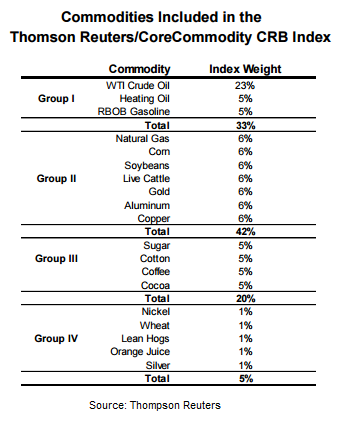
1988-1993: Positive GDP And Gains In Stocks
During the period highlighted below (1988-1993), commodity prices dropped 28%. Over the same period, the S&P 500 gained 66%. The average annual increase in GDP for 1988, 1989, 1990, 1991, 1992, and 1993 was 2.7%.
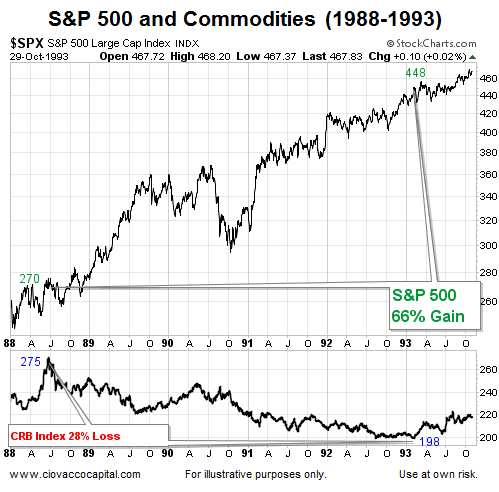
1996-1999: Commodities Drop And Stocks Skyrocket
During the period highlighted below (1996-1999), commodity prices dropped 31%. Over the same period, the S&P 500 gained 118%. The average annual increase in GDP for 1996, 1997, 1998, 1999 was 4.4%.
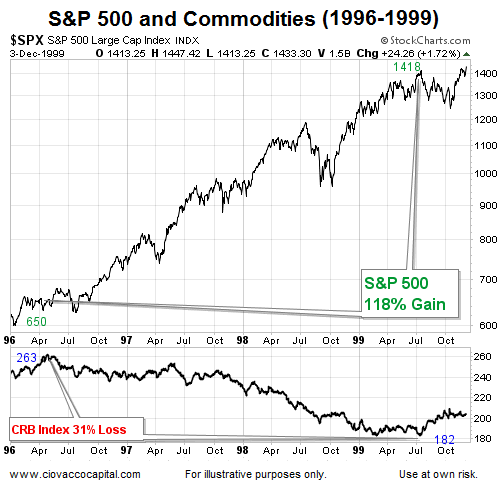
How About Dr. Copper?
On Wall Street you often hear the term “Dr. Copper” and that “copper has a PhD in economics since weak copper prices mean the economy and stock markets are about to roll over into a period of recessionary/bear market misery.”
Dr. Copper is another myth. In fact, after the period below, Dr. Copper was stripped of his tenure and asked to clean out his desk. In the period shown (1985-1993) copper prices tanked 52%. Over the same period, the S&P 500 gained 63%. The average annual increase in GDP for 1989, 1990, 1991, 1992, 1993 was 2.4%.
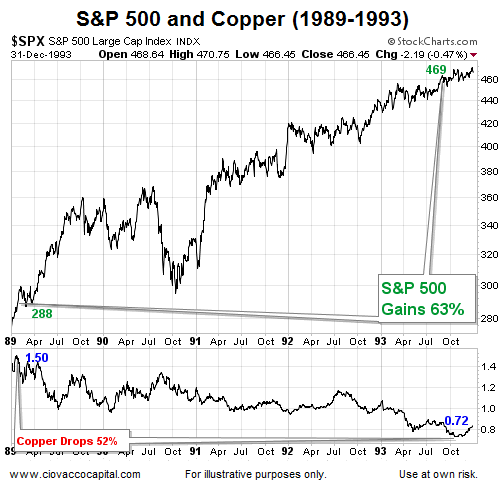
Dr. Copper Didn’t Win A Nobel Prize
In the period shown below (1995-1999) copper prices plummeted 58%. Over the same period, the S&P 500 gained 183%. The average annual increase in GDP for 1995, 1996, 1997, 1998, and 1999 was 4.0%, rather than the economic contraction forecasted by the “nutty professor” Dr. Copper.
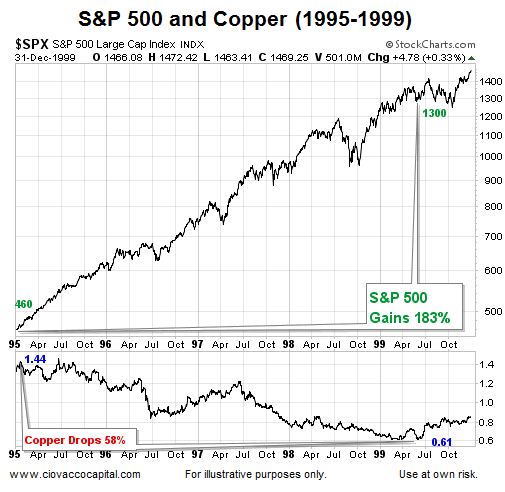
How Long Can Stocks And Copper Move In Opposite Directions?
If you were told that from date A to date B copper prices dropped 59% and you subscribed to Dr. Copper’s stock market newsletter, you would have expected the S&P 500 to have a rough time. In the ten-year period below, copper dropped 59% from point to point; over the same period the S&P 500 gained an eye-popping 351%.
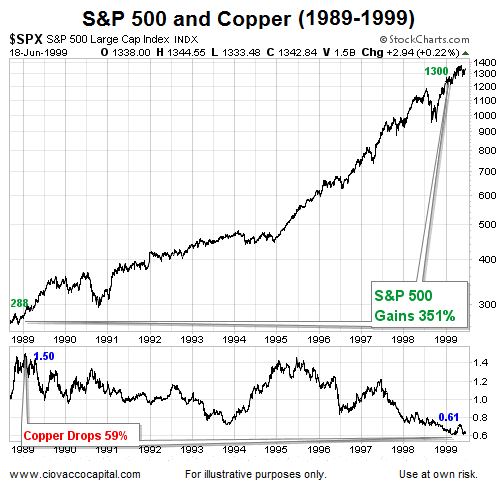
A Singular Takeaway
The purpose of this analysis is not to compare any of the periods shown to 2015, nor is it meant to make any commentary on 2015 (bullish or bearish). This analysis helps us answer one question and one question only:
Is it possible for the S&P 500 to post significant gains over a number of years during a period of weakness in copper and/or the CRB Index?
The answer, based on the facts above, is an indisputable and undebatable “yes, it is very possible for stocks to do very well when commodities are weak.” You may argue, “but 2015 is different!”. That argument applies to every historical reference made in the history of mankind regarding the economy and markets. Yes, today is different. That is not a new concept. Today is always different.
